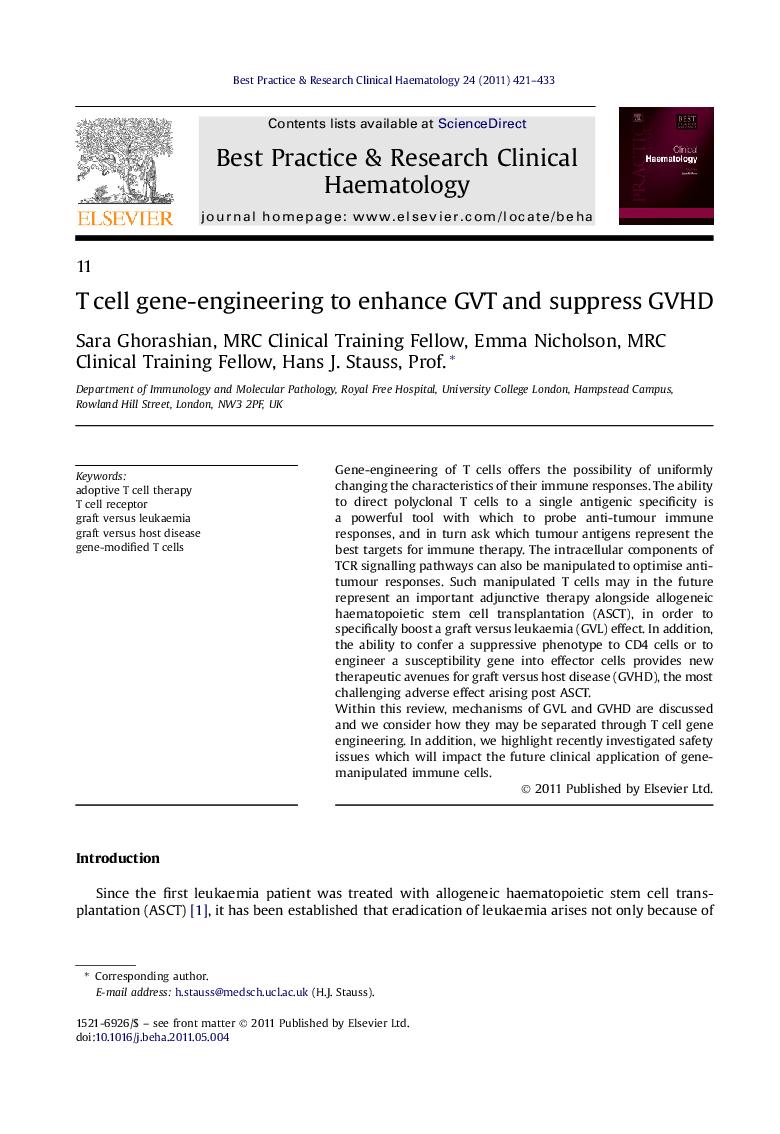| کد مقاله | کد نشریه | سال انتشار | مقاله انگلیسی | نسخه تمام متن |
|---|---|---|---|---|
| 2100442 | 1083001 | 2011 | 13 صفحه PDF | دانلود رایگان |

Gene-engineering of T cells offers the possibility of uniformly changing the characteristics of their immune responses. The ability to direct polyclonal T cells to a single antigenic specificity is a powerful tool with which to probe anti-tumour immune responses, and in turn ask which tumour antigens represent the best targets for immune therapy. The intracellular components of TCR signalling pathways can also be manipulated to optimise anti-tumour responses. Such manipulated T cells may in the future represent an important adjunctive therapy alongside allogeneic haematopoietic stem cell transplantation (ASCT), in order to specifically boost a graft versus leukaemia (GVL) effect. In addition, the ability to confer a suppressive phenotype to CD4 cells or to engineer a susceptibility gene into effector cells provides new therapeutic avenues for graft versus host disease (GVHD), the most challenging adverse effect arising post ASCT.Within this review, mechanisms of GVL and GVHD are discussed and we consider how they may be separated through T cell gene engineering. In addition, we highlight recently investigated safety issues which will impact the future clinical application of gene-manipulated immune cells.
Journal: Best Practice & Research Clinical Haematology - Volume 24, Issue 3, September 2011, Pages 421–433